.JPG)
We ran into the proverbial brick wall in part 10 of our Project Samurai series. This is the point in which we were ready to take the four-door Samurai out and put it through its paces. Then we ran into a computer mix-up that stopped us dead in our tracks.
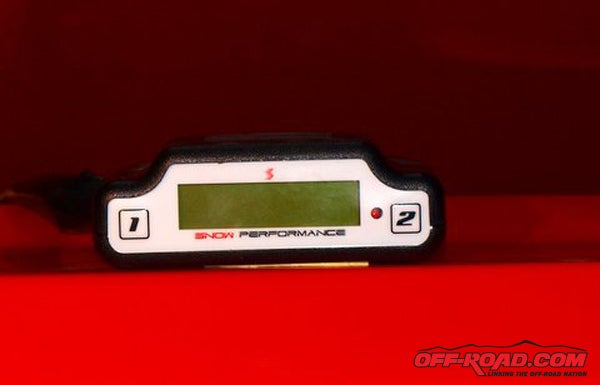
Critical last-minute stuff was accomplished before we could try to start the project Samurai up. While we were waiting for our custom-made water-to-air intercooler from Ron Davis, we took the time to install our methanol-injection system from Snow Performance. This installation was so simple – basically a ground wire, a positive lead, a simple controller and a few hoses. This system is designed to cool the exhaust gases down under a load, giving you more power and greater fuel economy. This system is unique in the fact that it is a two-part system. It injects at full enrichment under load and also just above cruise. This controller also reads the exhaust temperature. We will do a very detailed analysis as soon as we can get to the dyno.
Other Project Samurai Stories
Part 9: Tying up Loose Ends
Part 8: Completing Interior and Controls
Part 6: Exhaust, Driveshafts and Lighting
Our water-to-air intercooler arrived from Ron Davis. It consisted of the water-to-air exchanger (intercooler), a small, dual-pass radiator that mounts in front of the main radiator that keeps the water cool to the intercooler and a Menziere water pump. This is a high-quality water pump and it came with AN fittings. It's designed to flow at high volume and run constantly. We had to make the basic mount to hold the pump, and then we had only two wires to hook up: one wire for ground and one wire to ignition. A simple bracket was made to mount the intercooler.
The design of this intercooler was much more than expected. We thought it was going to be a simple box with a few inlets and outlets on it. Way wrong. The engineering that goes into one of these is quite extensive. We're very curious what the temperature of the air and water going in will be, and the temperature coming out, as well as what the horsepower gains are.
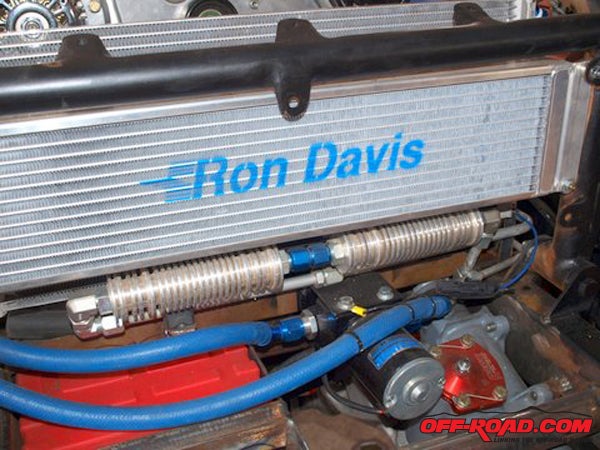
Then it was off to the Parker Hose Advantage Store for hoses to plumb the radiator to the intercooler and the pump. We also needed a hose from the turbo to the intercooler and one from the intercooler to the intake manifold. We took a sawzall and cut off the EGR valve that we weren't going to use anyway, giving us that room needed to install the intercooler. The Parker Hose Advantage Store had everything we needed to do this job.
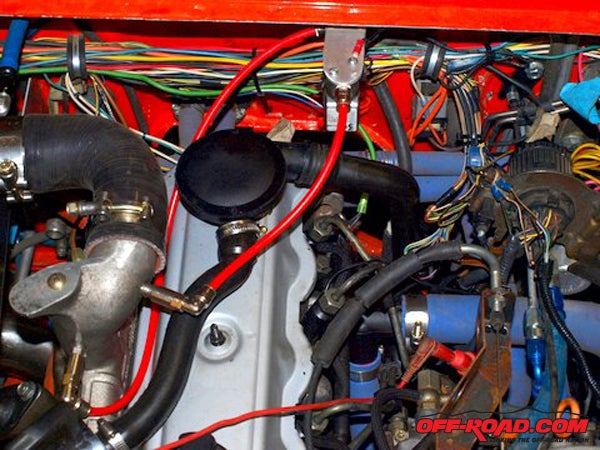
With all these critical details taken care of, the Samurai was at last ready to start. Or so we hoped.
“This is where hindsight came back to haunt me,” builder Wes Holmes explained. “I was advised to go the easy way and use the TDI motor with a mechanical injection pump from Thomas at Quality German Auto, from whom we purchased the motor. Back then, I thought it was the "same-o-same-o" as everyone else. But we wanted the extra torque, horsepower and fuel economy that the computer would give us, as well as the challenge. What we purchased was a 1.9-liter AFN motor out of a VW Passat, which is very similar to the 1.9-liter TDI motor. We are now finding it hard to obtain wiring diagrams. And with over 70 wires as well as sensors scattered all over the motor and no data port with the original computer harness, this is turning into a real challenge.”
Wes decided to go back to basics.
“Before starting this TDI motor, I had to bleed the injectors,” he said. “The FASS fuel pump is amazing. It sits two feet above the fuel tank and picks the fuel up and delivers it to the injector pump with no problem. It was so quiet I had to put my hand up to it to make sure it was running! We were now finally ready to start this motor. We almost had butterflies in our stomach. After consistent cranking of the motor, the butterflies left and heartache set in. It would not start.”
The disappointment was very real. Wes started checking everything, and checking it twice. He had fuel, all the mechanical parts in the motor were solid and that left only the myriad of wires from the computer to the engine, or some sort of a timing problem. Hours were spent chasing to problem to no avail. 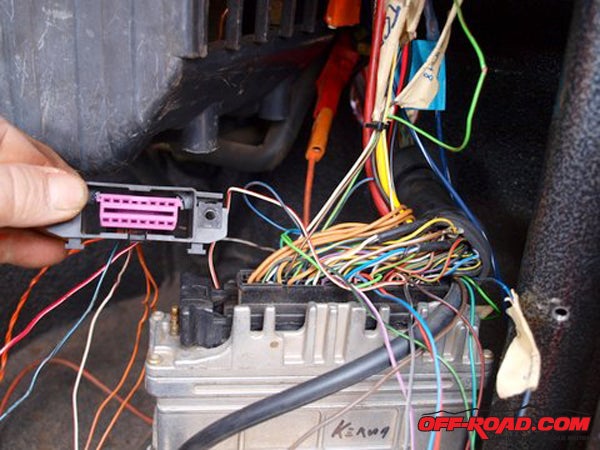
Wes threw up his hands and called a friend who’s a VW mechanic named Levi. He grabbed a voltmeter and a flashlight and dove into the wiring and the computer, but his search produced little results.
Everything was double-checked. We dug deep. When he made the engine plate and had the head off of the motor, he put a piston stop on top of the block and a degree wheel on the crank allowing him to find TDC. Marks were made on the timing belt cover and the harmonic balancer at TDC. Our TDI motor did not come with any way of knowing where TDC was once the original transmission was removed. Wes was up against a wall.
“Now is when all kinds of thoughts go through your mind,” he said. “The holidays are here, I had a deadline for the article and the King of the Hammer event is rapidly approaching. Did I wire it right, did I set the timing on the crankshaft, injector pump and cam right? What gremlins have come to haunt me? Am I feeling the agony of defeat?”
He decided to pull the front of the motor completely apart to double check whether or not we marked TDC correctly on the crankshaft. Troy Salisberry, the machinist on the build, came by and built a "dummy" injector for us to use as a piston stop, so as not to need to remove the head. Saving a lot of work and time.
To simplify this, it would be as if we made a "dummy" spark plug for a gas engine, making the spark plug internally too long that would hit the piston when it came up.
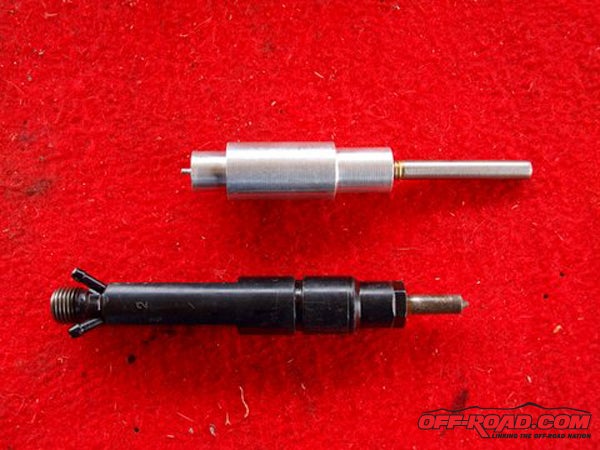
Wes put the piston stop in the injector hole then turned the crank over by hand until the piston hit the piston stop. He then set the degree wheel on the crankshaft at zero. Wes cranked the motor over the opposite way, by hand, until the piston hit the piston stop. He then took a reading off of the degree wheel and divided the difference in half. That number gave us the additional rotation needed, bringing our piston to TDC.
Next, we checked our injector pump and cam. Up to this point, everything was right mechanically. Everything was reassembled and then Wes dug into the wiring and computer to see if he could locate the gremlin. Lucky for Wes, his good friend Ken Neal at Bullet Proof Diesel, agreed to give it a look. “If anyone can solve this, it will be Ken,” he said. “He has amazed me on many occasions through the years and I'm sure he will probably make this look very easy. I am looking forward to bringing you good news and incredible readings from the dyno next month.”
Other Project Samurai Stories
Part 9: Tying up Loose Ends
Part 8: Completing Interior and Controls
Part 6: Exhaust, Driveshafts and Lighting
Next, the injector pump and cam was checked. Up to this point, everything was right mechanically. So then everything was reassembled.
At this time, Wes contacted Kerma TDI for some advice. They asked a few questions and it was determined that we had a European AFN motor, very similar to a US TDI motor. They've assured Wes not to worry, and that after the holidays, we'll be able to figure this out quite simply. As with most computer-controlled engines, it's usually something simple.
But for now, the entire crew is just standing there, shaking their collective heads after barking up the wrong tree.


 Your Privacy Choices
Your Privacy Choices